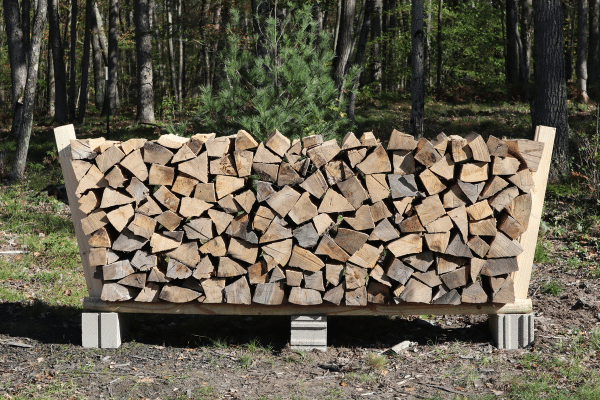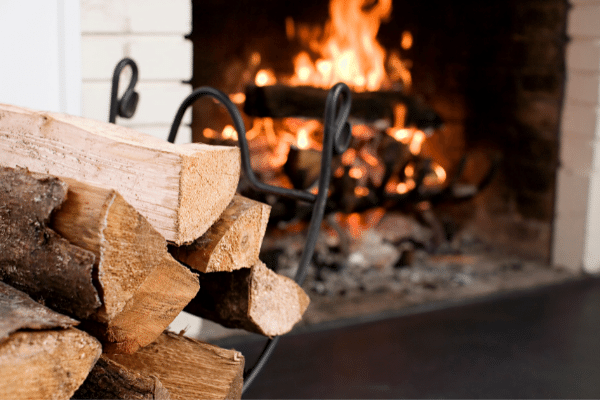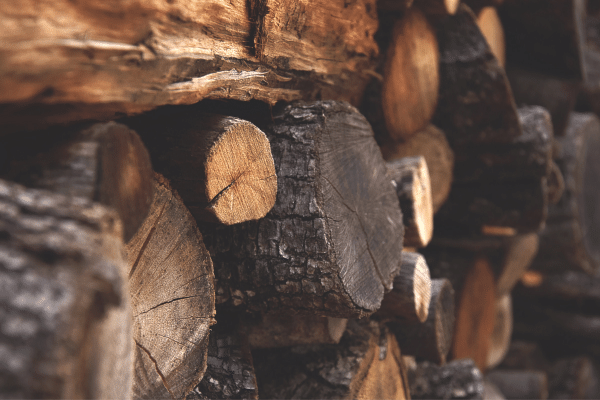- Home
- Types Of Firewood
- Is Sweet Gum Good Firewood
Is Sweet Gum Good Firewood?
This post may contain affiliate links so I earn a commission.
Is sweet gum good firewood, or should you spend your time and money on a better firewood choice?
The sweet gum tree is a deciduous tree native to North America that gets its name from the fragrant resinous gum that oozes from its bark when it is cut.
The leaves of the sweet gum tree turn vibrant shades of yellow, orange, and red in the fall, making them popular as ornamental trees.
In addition, the dense wood is used in furniture making.
But what about as a heat source?
Is sweet gum good firewood?
Let’s find out.
The Sweet Gum Tree
Sweet gum trees, known scientifically as Liquidambar styraciflua, are found in the eastern half of the United States and as far south as Mexico.
In fact, it is one of the most common hardwood trees in the Southeastern U.S.
You can easily identify sweet gum trees by their distinctive star-shaped leaves, which have either five or seven pointed lobes.
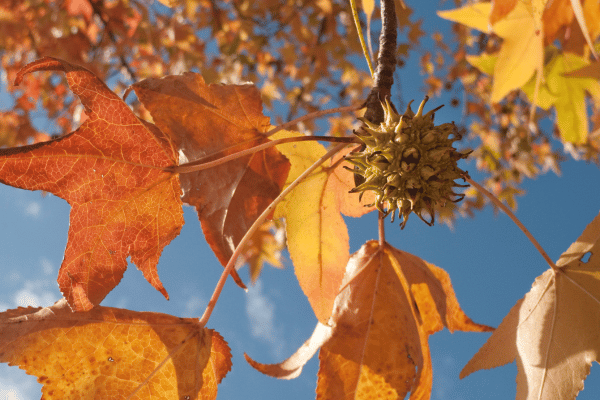
The trees produce small, round, spiky seed
pods that are a nuisance to clean up and painful to step on barefooted.
Throughout history, the sweet gum trees were valued for their sap, which was used for medicinal purposes.
Salves and ointments were made from the sap and used to treat wounds and reduce pain.
The wood of the sweet gum tree is moderately dense.
It has been used in the furniture and cabinet industries, as well as for making veneers.
Heating With Sweet Gum Firewood - BTU Rating
Not all trees are created equal, and not all wood is ideal for all usages.
When evaluating wood types for use as a heat source, there are several factors to consider.
You should know the energy content of the wood species you plan to cut, the ease of cutting and splitting it, the ash, coal, and creosote production, and the seasoning time.
Different wood species have varying energy content, as measured in British Thermal Units, or BTUs.
One BTU is equivalent to the amount of energy needed to heat one pound of water by one degree Fahrenheit.

This unit of measurement is used to indicate
heat output for many things, such as appliances and furnaces.
For firewood, BTUs help us to determine which types of wood will be the most efficient to burn.
Hardwood trees, such as oak, maple, and hickory, typically have higher BTUs than softwoods, like pines and spruce, meaning they burn longer and produce more heat.
Sweet gum has a BTU rating of 20.6, which puts it in the middle range.
Some of the woods with the highest BTUs include Osage orange with 32.9, beech with 27.5, apple with 27, and oak with 26.2.
Some of the lower BTUs wood are eastern white pine with 14.3, spruce with 15.5, and willow with 17.6.
Sweet gum’s BTU ranking put this tree on a par with black cherry and elm, which both have BTUs of 20, and mesquite, which has a 20.8 BTU.
Splitting Sweet Gum Firewood
Is sweet gum good firewood to split?
Not really.
When judging its worth as a firewood, sweet gum gets low marks in the ‘ease of splitting’ category.
Folks will tell you that sweet gum is one of the most difficult woods to split.
For this reason alone, many people avoid using sweet gum as firewood.
While this is a big detriment, it is not an insurmountable obstacle.
But it is a challenge.
Sweet gum is a dense wood, and it also has interwoven fibers running through it.
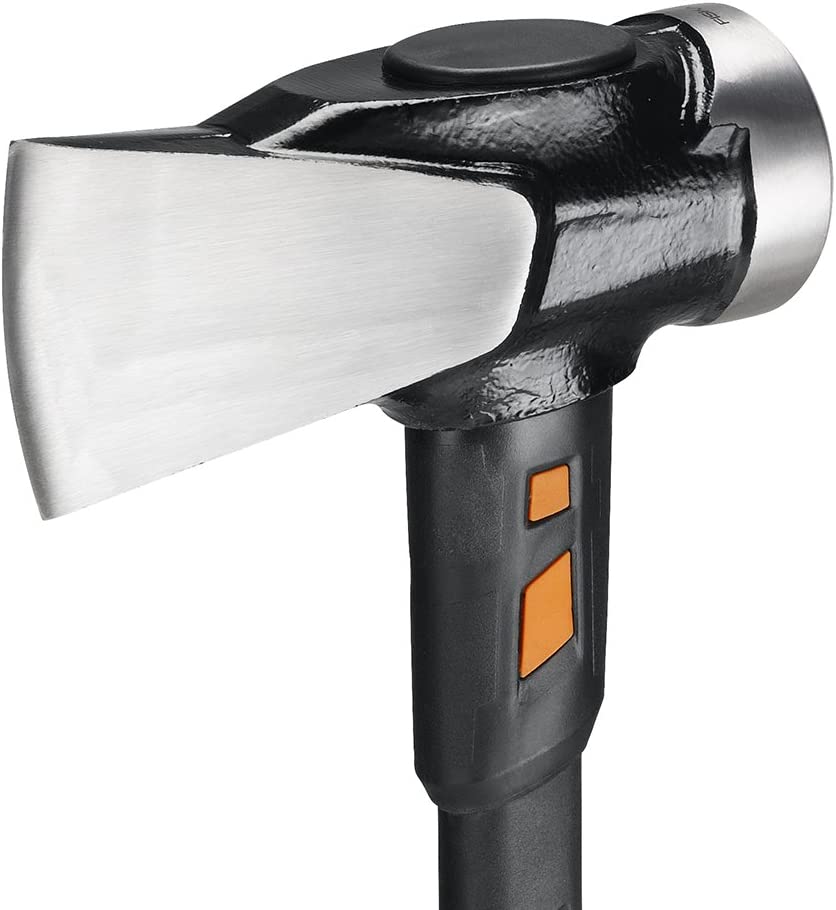
As
the wood dries and seasons, the fibers twist and warp and become even harder.
This makes the wood that is already hard to split even more difficult and laborsome.
Your best bet is to split the wood while it is still green.
Split the wood as you chop it before the wood fibers have a chance to become even tougher.
Most people who have used sweet gum as firewood will recommend that you use a hydraulic log splitter to split sweet gum.
It saves your body the wear and tear of splitting it with an axe or maul.
But even when using a log splitter, it is tough going.
The wood doesn’t split like other types of firewood.
Instead, it rips, tears, and splinters apart.
There is a trick, however, to splitting sweet gum with an axe or splitting maul.
Rather than splitting the wood down the center like you would do with other woods, split off sections of the log along the outside edges, working your way around the log until you reach the core.
Is Sweet Gum Good Firewood To Burn?
When well seasoned, sweet gum firewood produces only light smoke.
If the wood still has a high moisture content, it will have an increased smoke output.
Ideally, the wood should have a moisture content of less than 20 percent before you attempt to burn it.
There are plenty of gadgets on the market that you can use to determine the moisture content of your wood.
Creosote Production
Creosote is a black or brown, sticky, tar-like substance that can accumulate inside chimneys and flue pipes when burning wood.
A byproduct of incomplete combustion, creosote is composed of highly flammable chemicals that can create a dangerous fire hazard.
Sweet gum wood is high in resin, yet it has a low creosote output when the wood is properly dried and seasoned.
No matter what type of firewood you burn, you should always have your chimney cleaned and inspected on an annual basis.
Proper cleaning and maintenance can reduce the risk of chimney fires from creosote buildup.
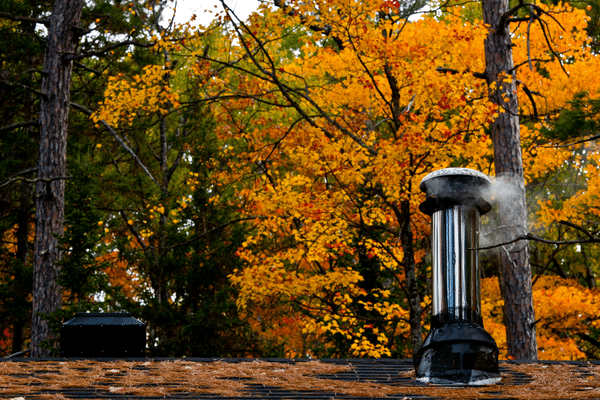
Popping and Sparking
With its high sap content, it shouldn’t be surprising to learn that sweet gum firewood has a tendency to spark and pop as it burns.
Even when properly seasoned, sweet gum wood is prone to sparking.
If you are burning the sweet gum wood in a fireplace, you should use a glass screen to prevent sparks from flying out.
If a spark lands on your carpeting or furniture, it could cause a house fire.
Also take care when burning sweet gum wood in a campfire or bonfire.
An errant spark could injure someone sitting around the fire.
Sweet gum is ideally suited for use in enclosed wood burning stoves or outdoor wood burning furnaces.
Is Sweet Gum Good Firewood - Coal Production
Sweet gum is a dense wood, but it lacks the slow burning qualities of oak or beech.
The wood burns rather quickly and does not produce a good bed of coals with the longevity to heat your home overnight.
If you need your fire to give off heat for longer periods of time, consider mixing sweet gum firewood with other types of wood, like hickory, ash, or oak, to give you the hot coals you need to keep your home warm throughout the night.
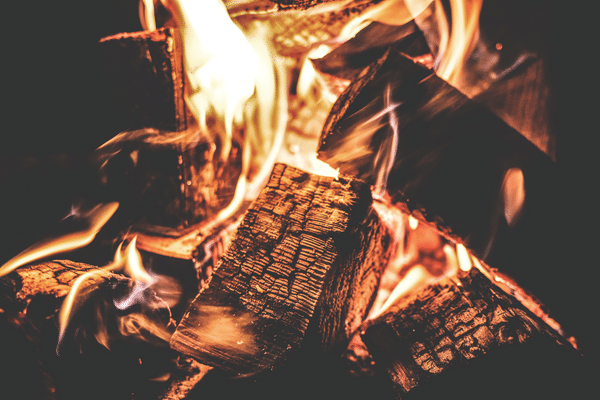
Ash
and Soot Output
Sweet gum firewood burns hot and fast, leaving behind a good amount of ashes.
When the wood is properly seasoned and has a low moisture content, it will be less messy than if you are burning moist or green wood.
Although sweet gum wood leaves behind a decent amount of ashes, it has a fairly low soot output.
It is not as messy as other types of wood, but you’ll still need to sweep up the ashes.
Odor
When burned, sweet gum firewood has only a slight odor.
People have described the smell as yeasty or beer-like.
Unseasoned sweet gum firewood will have a stronger, rather unpleasant smell thanks in part to the high moisture content.
How To Season Sweet Gum Firewood
Sweet gum is a dense, moist wood with a high sap content, meaning it has a longer seasoning time than some other woods.
It is recommended that the cut, split firewood season for a full year or longer before you attempt to burn it.
The moisture content should be below 20 percent before you try to use it but aim for an even lower percentage.
The optimal moisture content for sweet gum is about 12 percent.
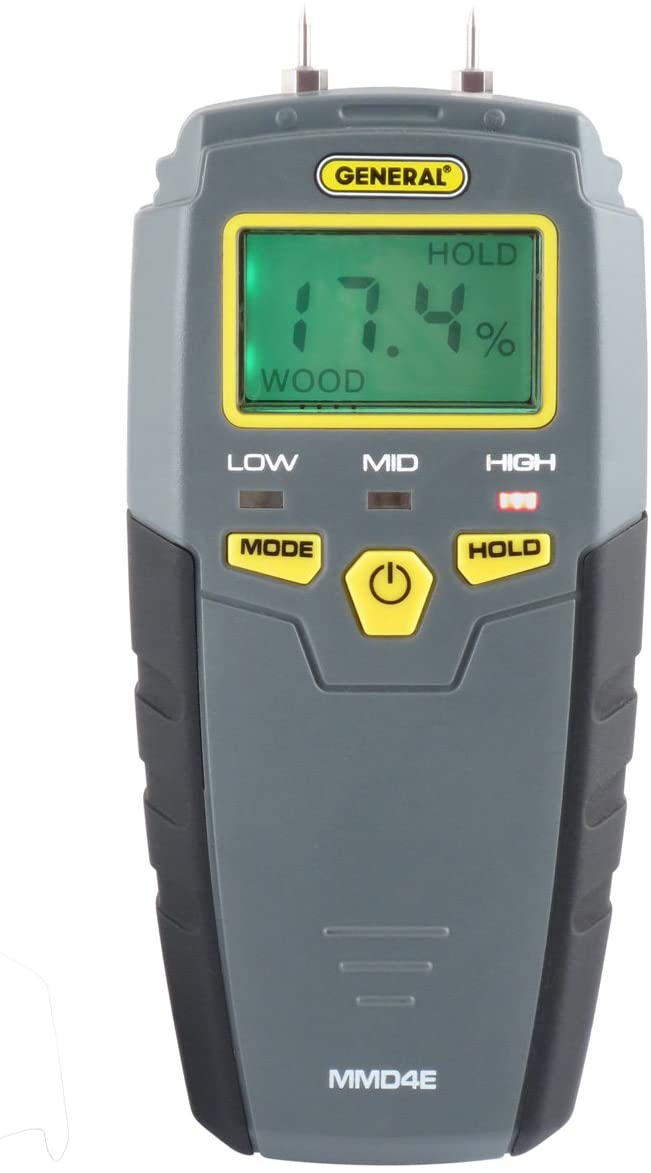
You
should know that sweet gum wood has a higher likelihood to rot or grow mold
when exposed to moisture, therefore where and how you store sweet gum firewood
is important.
The stack of wood should be kept under a roof, overhang, or cover to keep it from getting wet.
It should also be positioned in an area with good air circulation.
When you stack it, leave large spaces between the logs to allow the air to reach through the stack.
Also, keep the wood on a cement slab or on pallets, instead of directly on the ground.
This will keep the wood dryer and prevent rot.
Is Sweet Gum Good Firewood - Overall
If we focus solely on the burning aspect, sweet gum is a good firewood to use.
With a BTU of 20.6, it has a higher-than-average heat output.
Coupled with this, the wood has a low smoke output, little odor, and low creosote production.….all features that would make it seem ideal for burning as a heat source.
Sweet gum wood, however, is extremely difficult to split.
The backbreaking work of cutting and splitting sweet gum makes many people want to cross this wood off their list of potential firewood choices.
In addition, the wood has a high sparking tendency and produces quite a bit of ashes.
So how does that all add up?
If you have access to other types of firewood, you should go that route before you use sweet gum.
However, if you have access to free sweet gum wood or you need to remove a sweet gum tree from your property, by all means, add this to your wood pile.
Just be aware that you will have to put in some work, time, and effort before you can enjoy the warmth of sweet gum firewood.
